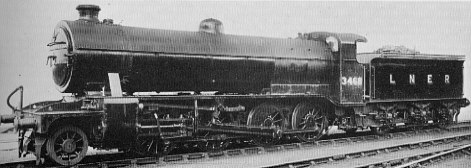Your cart is currently empty!
Sir Nigel Gresley
Sustaining the legacy

Class O1
The Great Northern Railway (GNR) class O1 was a class of two-cylinder 2-8-0 steam locomotive designed by Nigel Gresley for heavy freight work and built by the GNR between 1913 and 1919.

Gresley designed the class O1 2-8-0 for the heavy coal trains on the mainline from Grantham to London, ordering five examples 1913, which were completed at Doncaster in 1914. A further fifteen were ordered in January 1916, but due to the First World War delays were incurred and construction was transferred to the North British Locomotive Company, who delivered the first ten in April 1918, followed by a further five in October and November 1919. The class O1s were nicknamed “Tangos” due to their introduction at a time when tango dance was appearing in Britain.
These locomotives were designed to haul the heavy coal traffic from Peterborough to Ferme Park (London). The design load was eighty wagons carrying 1,300 tons, which represented twenty more wagons than a typical class Q1/Q2 load. All twenty locomotives were initially allocated to Peterborough (New England shed) to perform this work. The New England trains also worked northwards to Doncaster, taking empty wagons and returning with full loads. From 1925, most of these Doncaster duties were taken over by class O4s.


In 1932 congestion on the GNR main line was becoming a serious problem, and a move towards reducing the number of slow moving coal trains was made. One solution was to haul smaller sixty wagon trains with faster class K3s. This eventually led to the displacement of ten class O1s from New England to Doncaster. They also hauled ore trains to Frodingham.
In 1945, the Grantham iron ore traffic was taken over by class O2s, and the entire class was allocated to Doncaster. In 1946, all twenty moved to Frodingham to haul trains to and from the steel works. In 1948, the remaining locomotives moved to Immingham and Retford where they hauled lighter services.


The class was re-designated class O3 by the London and North Eastern Railway in 1944 to release the class O1 classification for use with the LNER Thompson class O1 introduced during the Second World War.
Seventeen examples survived into British Railways ownership in 1948, but all had been withdrawn by 1952. None were preserved.

